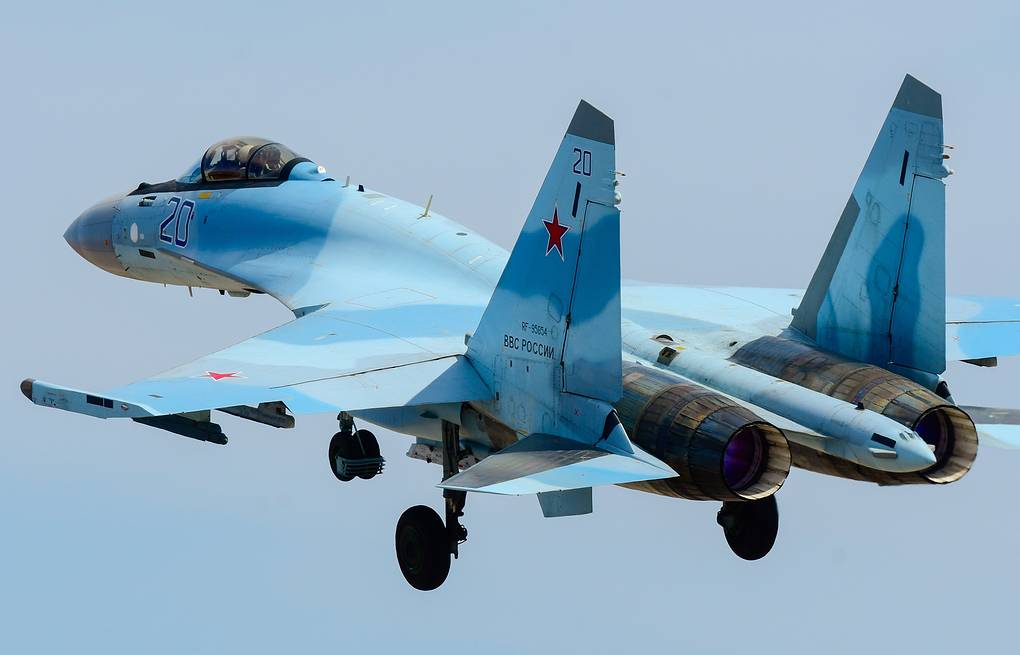
China’s recent agreement with Russia to acquire 24 Sukhoi Su-35 aircraft is of interest to New Delhi as it would face off against India’s Sukhoi Su-30 MKI fighter in any contingency planning by the air forces of the two countries.
The Su-30 was a top-line fighter aircraft when it was procured by India and will be beginning the season of upgrades soon. The brand new Su-35 may be a notch higher. Even though after its upgrade, the Su-30 MKI would have the specs of the next version of the Su-35, possibly a Su-36, aviation experts believe.
The similarities between the present Su-30 MKI and the Su-35 are they carry 12 hard-points, besides 8,000 kgs of external ordnance, pulling a maximum of 9G. They have the same air-to-air and air-to-ground weapons package; have thrust vectoring engines and can house external jammers of all varieties and all kinds of pods.
The Su-30 MKIs canards are a necessity because of its heavy IRBIS radars (Phased Electronically Scanned Array Radar – PESA), while the Su-35 do not need canards as its radars are lightweight. The Su-30 MKI is a two-seater, while Su-35 is a single seater multirole aircraft.
Indian variety of the Su-30 cannot carry external fuel tanks, while Su-35S has two of them – each drop tank carrying 1400 kgs.
The Russian Su-35, which the Chinese have signed an agreement to buy two dozens of them have extensive use of composite material; while Su-30 MKI has very little composite materials in its fuselage or wings.
Two important factors should be kept in mind in terms of their operational deployment; while Su-30 MKI has a rather large radar cross section (RCS) in comparison to the Su-35 while the latter can track and engage more targets.
According to retired air marshal Sumit Mukerji of the Indian Air Force, “the progressive evolvement of the SU-27 Flanker through the SU-30 model and the Indian variant, the SU-30 MKI, with state-of-the-art technologies embedded, allowed the Russians to step up from 4th Gen to the 4++ Gen smoothly with the creation of the SU-35. From the data available on the aircraft, it’s capabilities both in terms of performance and armament, the SU-35 is obviously a step ahead of the SU-30 MKI, but not by much.”
“Notwithstanding the edge, the SU-35’s ability to operate from relatively forward airfields at high altitude such as in the Tibetian plateau will certainly be curtailed in terms of quantum of armament. So, at near parity in performance, two factors will determine who will come out best — the on-board avionics and the pilot(s) with his professional training,” he added.
